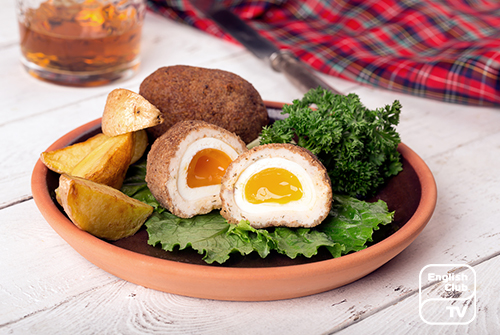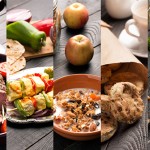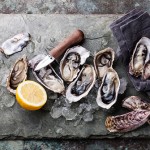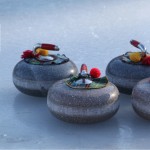The Scottish people boast an incredibly delicious range of traditional scottish food. Almost all of their culinary recipes have attracted expert chefs and food lovers from around the world. However, while there is entirely Scottish food items, millions of tourist arrivals in the country over the years have added many more fusion food recipes as well. They have brought in variety and different tastes that none cannot resist when they travel to Scotland.
Wild game, dairy products, fruits, vegetables and fish, take the central place in traditional cooking in Scotland. They like to cook in a simple manner without mixing a lot of imported ingredients but use locally found produce such as garlic, fennel, rosemary, mint, peppercorns, cloves, nutmeg and parsley, to name a few. In the past, salt was very expensive in Scotland. Meat Jellies which they consumed in the past is now available at some restaurants that advertise their traditional ways of preparing food.
The era that brought in foreign invaders and the times they helped armies from neighbouring countries to the country have added interest for food experts because they have found many traditional food recipes belonged to this period. This era shows that Scottish traditional food items are but a mix of other traditional foreign food items. They inherited the cooking methods of curing and pickling, salting and smoking, from the Vikings who invaded the country in the 8th century. Smoked haddock fish is now frequent in the kitchens of Scotland which are traditionally one of their staple food items. They cook it with milk and onions.
Another tasty traditional soup in Scotland is Cullen Skink. They prepare this famous soup with haddock, onions and milk. It is the main food item coming from the fishing village of Aberdeenshire. However, Cullen skink is now available from almost all the restaurants in Scotland. France supported Scotland in the battle against enemies from time to time in the 13 century. Due to the alliance of France-Scotland known as Auld Alliance, a range of rare types of wine and food items were introduced to the country as well. The elite in Scotland mainly used the French way of cooking during this time and these methods exist even today.
Collops, hotchpotch asashet, gigot which is a leg of veal or lamb and many other cooking terms got added to the Scottish language. Stovies which was traditional French is one of the favourites of tourists and locals in Scotland at present. Scotts use meat leftovers of cooked meat to prepare stovies mixing with onions, potatoes, gravy and root vegetables. One can also find another traditional Scottish food item called Hogmanay at traditional restaurants.
Ancient Italians trading in the country had also influenced the cooking in Scotland. Castlevecchi, Aldo, Angelo and so on are typical signs that visitors can see on the doors of restaurants in the central part of Scotland. Restaurants such as La Interna, Valvona and Crolla and Fratelli Sarti that visitors can find in Glasgow are good locations to taste traditional Scottish food items that carry an Italian influence.









